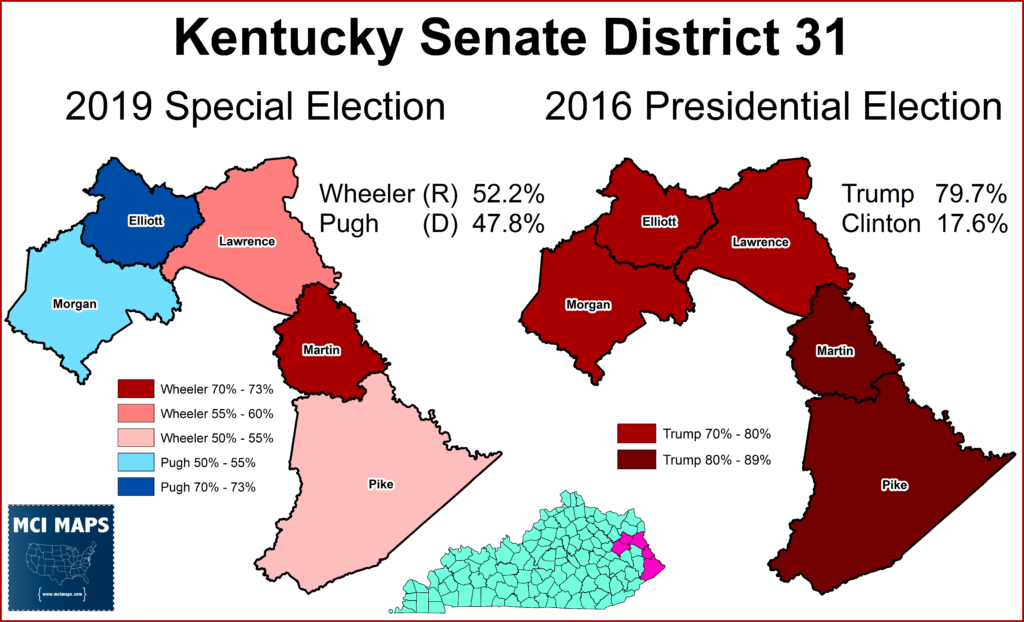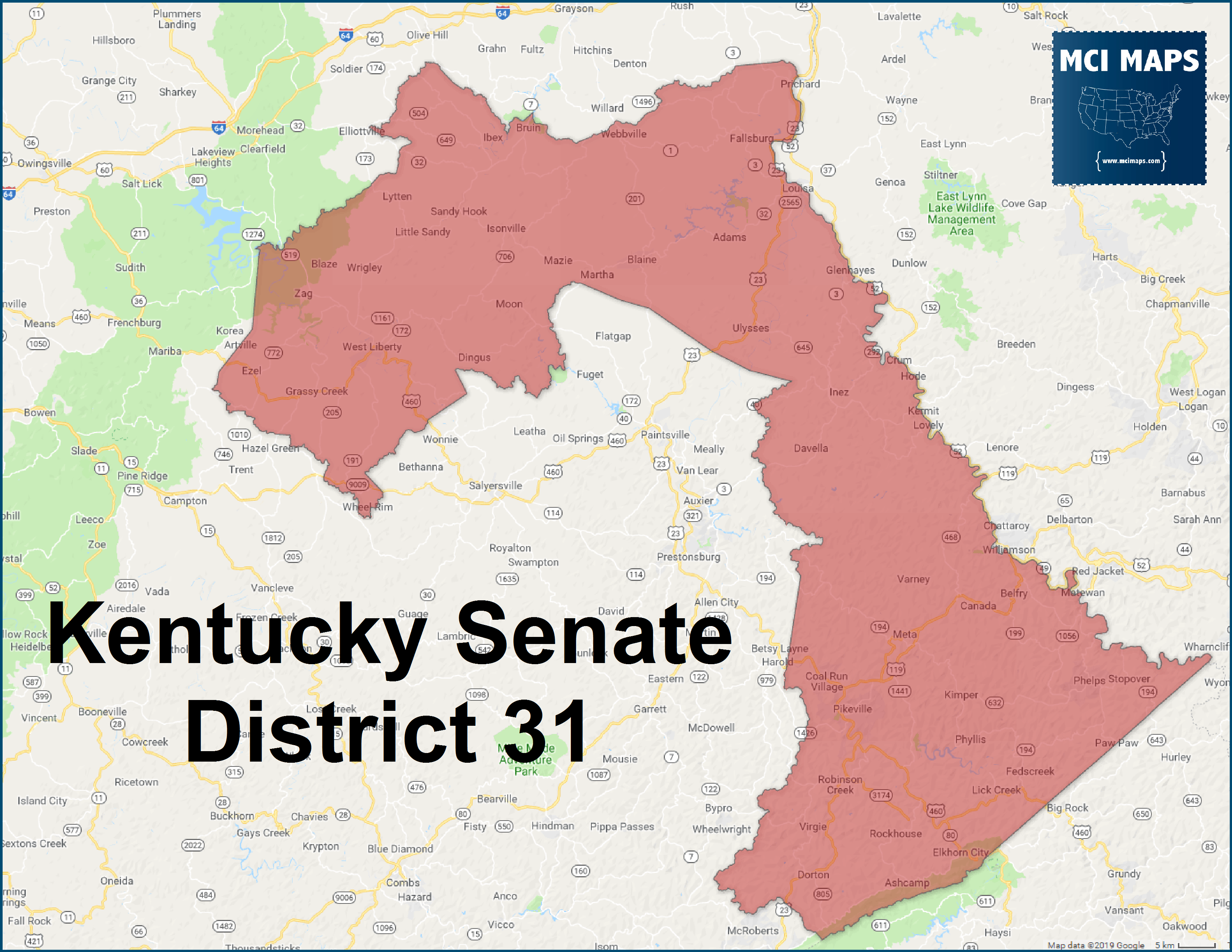On Tuesday, voters in five eastern Kentucky County will go to the polls in the special election for Senate District 31. The district sits in the heart of Kentucky’s coal country – a region with strong democratic roots that is seeing a rapid shift to the right. This region full of contradictions. An area of beauty, but without clean drinking water; an area of local democratic control that gave Trump 80% of the vote, and an area of immense mineral wealth but is one of the poorest regions in the nation. This region has been under democratic control in the state legislature for decades. Democrat Darrell Pugh will face off with Republican Phillip Wheeler. Despite the district giving Trump nearly 80% of the vote, both parties are pushing heavily to win the seat.
The 31st State Senate District
Kentucky’s 31st State Senate district is based out of eastern Kentucky. It includes the whole counties of Pike, Martin, Morgan, Lawrence, and Elliot. It is entirely covered by the Eastern Kentucky Coalfield.
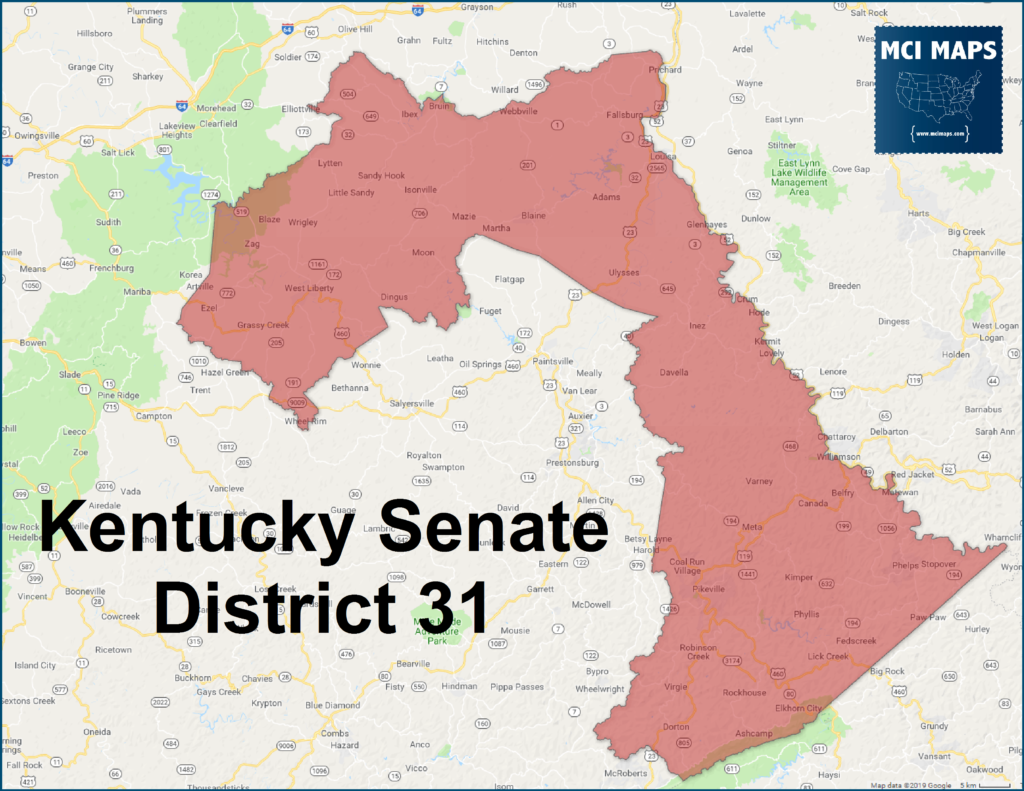
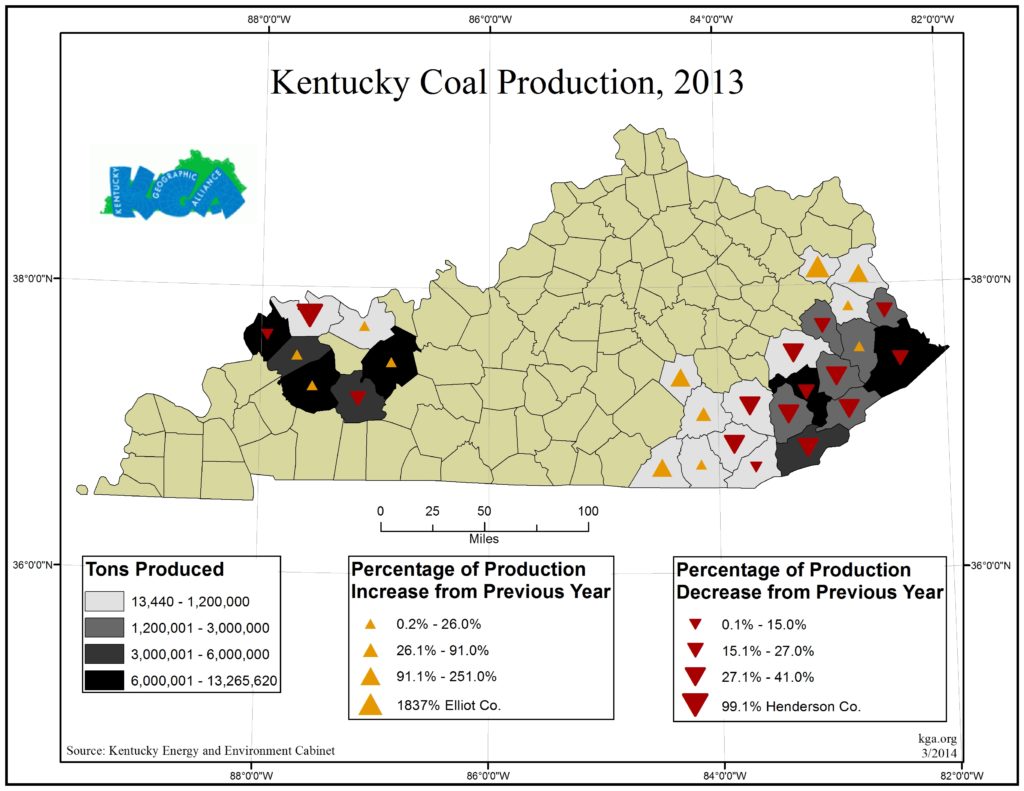
Like much of the Appalachian coal fields, this district is a unique mixture of strong local democratic roots but solid Republican allegiance for President. Pro-union, pro-pension, anti-corporate sentiment keeps local democrats in charge; however anti-coal, social-liberal, pro-environment pushes by national democrats have turned this region to the GOP in most federal races. This district is over 61% Democratic in registration but Donald Trump scored 79% of the vote there.

The district sits right in the heart of a region moving away from Democrats. Democratic Senators in the counties around this region all saw their support fall between their 2012 and 2018 races. The shift to the right was not just a Trump phenomenon.
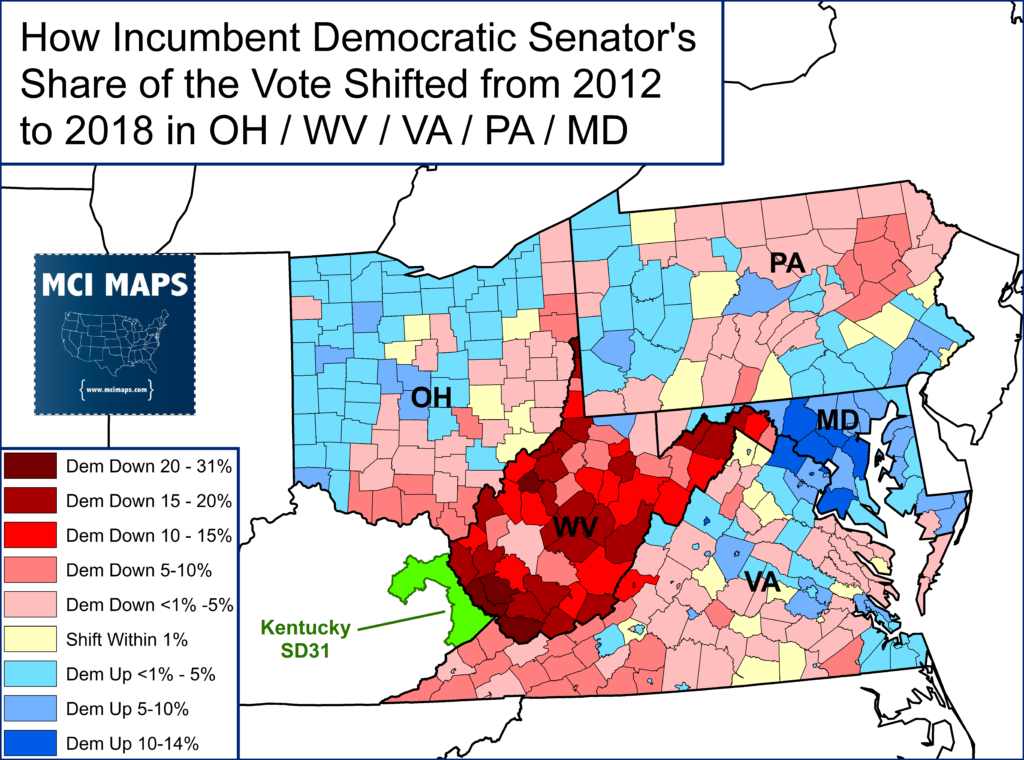
The district sits in an area moving further to the right but is still home to a large population of conservative, blue-dog democrats.
The district is five counties, but the biggest by far is Pike; which makes up over 55% of the vote. Both special election candidates are from Pike and how it votes is likely to decide the winner. Pike, along with Morgan and Elliot are still solidly democratic at the local level. Lawrence, meanwhile, is the most divided electorally. Martin is lone solid GOP county (dating back to civil war politics). However, registration aside, all five were solid GOP for President.

Local issues drive voting here. The national GOP, and Trump especially, were seen as good for continued coal and other energy jobs, a major economic force in the area. However, these are still counties that back local democrats – something similar in much of Kentucky.
Conservative Democrats of KY
Kentucky and West Virginia have long been prime example of conservative democrats. Kentucky still has large numbers of local democratic officers and until 2016 still had a Democratic state house – all this despite being solid GOP for President since the 2000s. However, these democrats are much more conservative and cannot be viewed the same way you would Democrats from major cities or northern states. This fact would manifest itself of when the state produced a large protest vote in Democratic Primaries for President.
The map below highlights the phenomenon of conservative democrats in Kentucky. Democrats still control registration in the state, but many of these are democrats who would rather vote “uncommitted” than for Obama in the 2012 Democratic Primary.
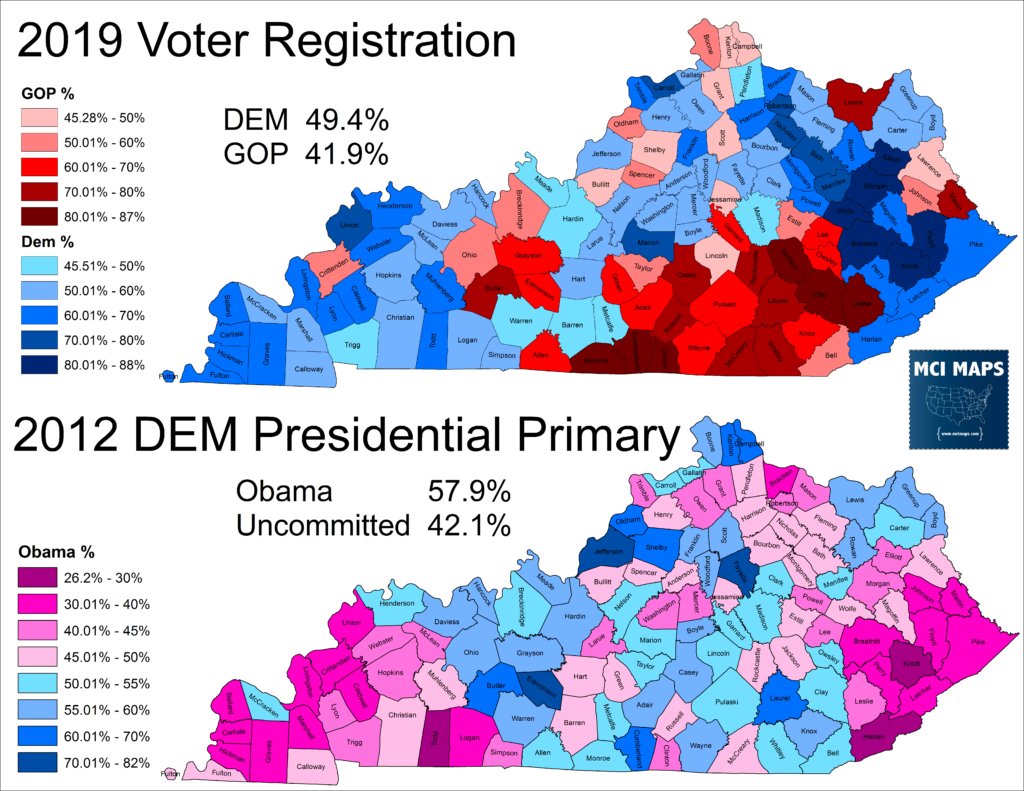
Looking at district 31 specifically, “uncommitted” beat Obama 63-37 in 2012. In the 2016, primary, Sanders won easily but 17% also backed other assorted candidates. Even much of Sander’s wins can be attributed to conservative protest votes; something I wrote about here and here. While Sander’s economic populism definitely had its supporters, his environmental stances and social liberal positions were far to the left of these conservative voters (many who answered exit polls saying they wanted someone more conservative than Obama). Sanders did well in both the West Virginia and Kentucky coal fields.
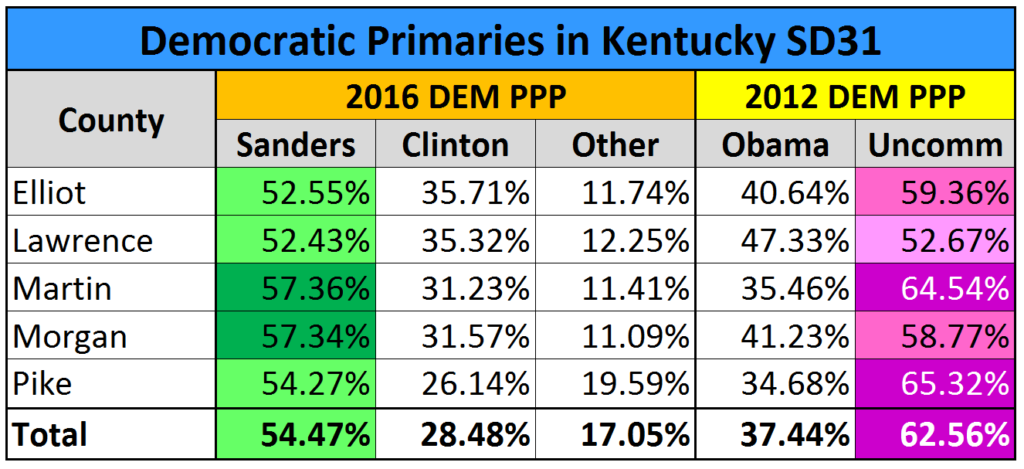
So while we have a district with a large democratic population, it is a population very much to the right of the national party.
Local and State Dynamics
Three of the five counties in SD31 are still entirely democratic at a local level. Pike, Elliot, and Lawrence all have nothing but Democrats for their county-wide local officers. (Yes they elect a jailer).

At the state politics level, the region still leans democratic. In 2016, when the GOP finally captured the state house by gaining an insane 17 NET seats, several districts in eastern Kentucky remained blue while others flipped.

The GOP made several gains in eastern Kentucky, but the area around Pike remained blue. Then, just two years later, Democrats won several districts back in the Eastern Kentucky region.
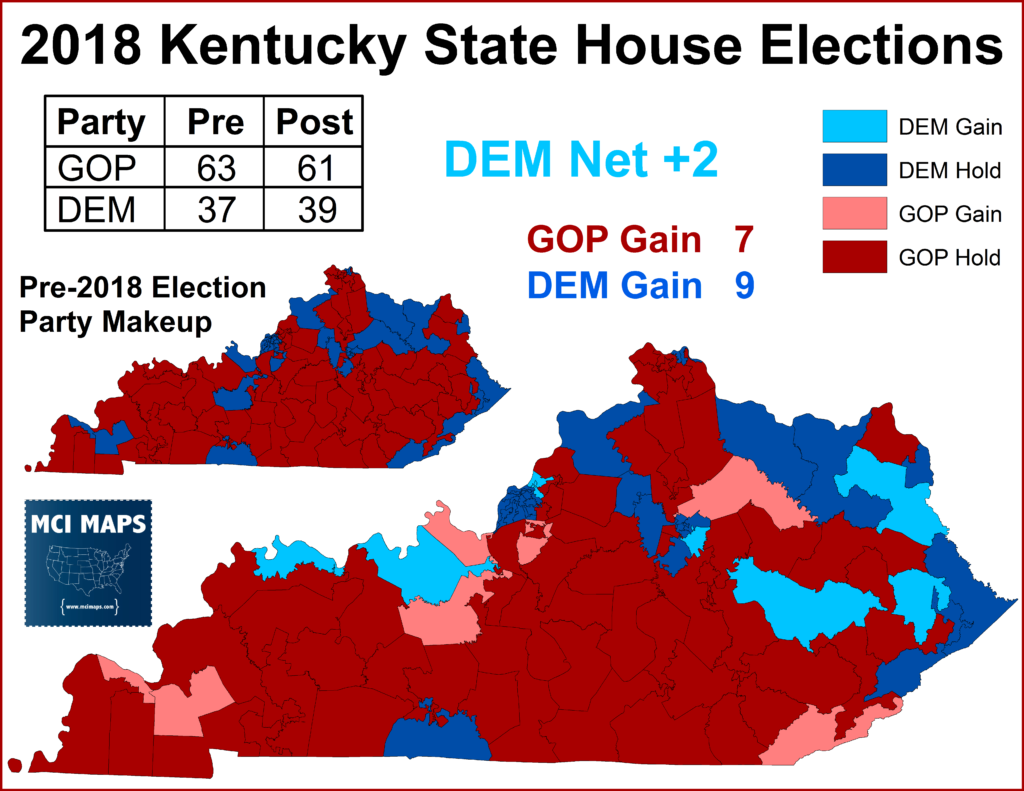
As of now, most state house districts that overlap with SD31 are Democratic held. The borders are very bizarre and don’t honor county borders like the state senate does. Below is a reference map for the state house seats with SD31 overlap.

Now here is the result of the state house elections with SD31 highlighted.
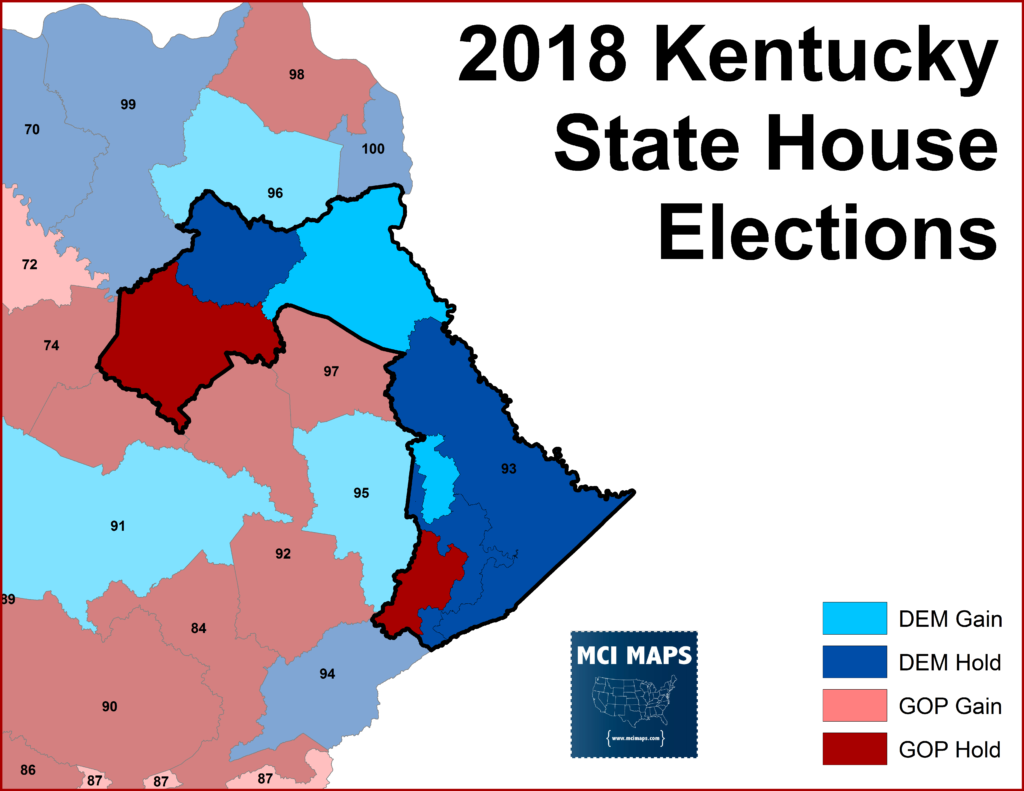
At this point, most of the district is represented by a Democrat in the state house. This is despite the fact all these districts were overwhelmingly Republican in 2016.

Democrats have been aided by Incumbent GOP Governor Matt Bevin being very unpopular in the state as a whole and in eastern Kentucky. Opposition to anti-union and anti-pension proposals by the GOP have been a major focal point for eastern Kentucky Democrats.
At a state level, the 31st district can be fairly divided. The district easily backed Bevin for Governor in 2015 but likely-wise backed incumbent Democrat Steve Beshear in 2011.

While it easily backed Bevin that night, the district only narrowly rejected Democrat Alison Lundergan Grimes in her Secretary of State re-election while they voted for Andy Beshear (son of the outgoing governor) for Attorney General.
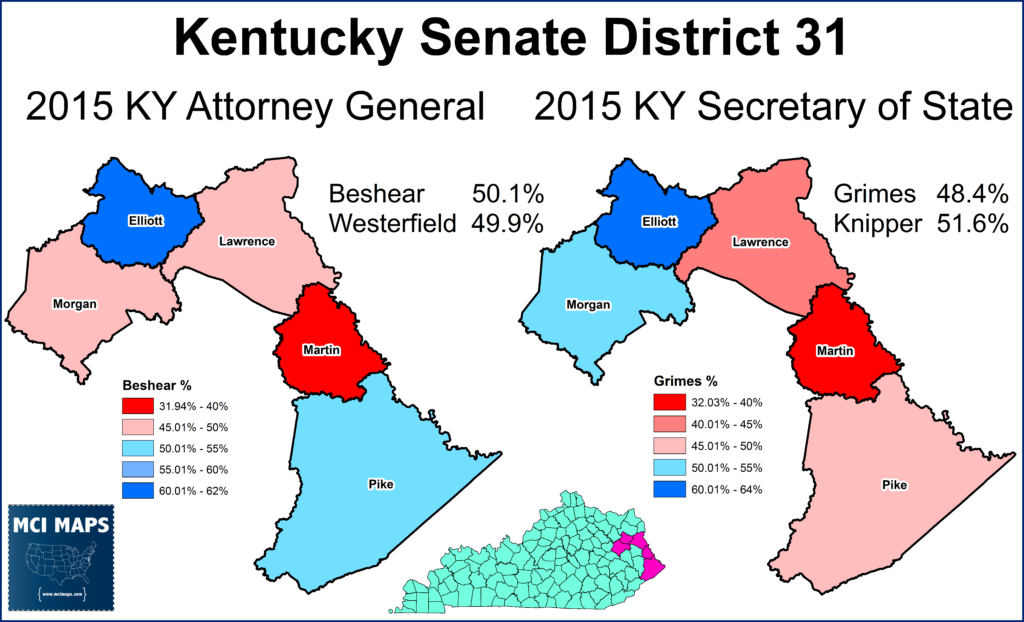
Over the last several cycles, the district has moved to the right of the state when comparing Governor and Cabinet races. However, there is a very large gap between the GOP margin for federal and non-federal races.

The further down-ballot you go in SD31, the better Democrats do.
Conclusion
The question on Tuesday will be, how much as the GOP nationalized the race. The Kentucky Republicans are trying to tie Pugh to Nancy Pelosi and the DNC. There is a reason for this – a nationalized race is lost to democrats. Democrats, meanwhile, are focusing on local issues and using anti-Bevin sentiment – saying a democratic win will send a message to the unpopular governor. If they can keep it local and state focused – then they just might pull out a win. Win or lose, we are going to see a HUGE over-performance from Clinton’s 2016 loss. The question is – will it be big enough.
UPDATE OF RESULTS!
The question has been answered – it wasn’t enough. Republicans won the senate seat by 4%. This of course is much better than Trump’s 60% margin.
